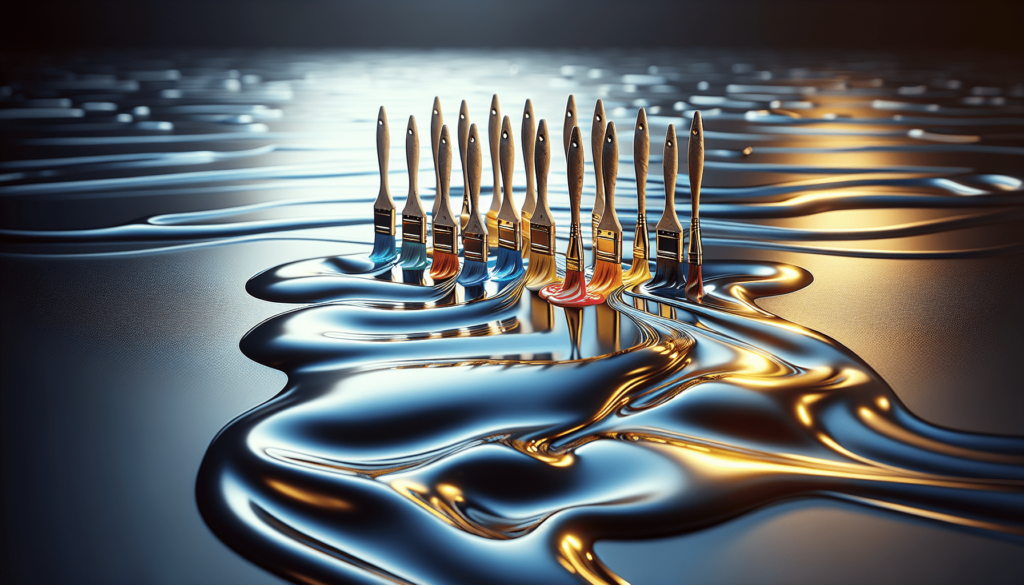When it comes to painting over epoxy surfaces, the choice of paint can greatly influence the outcome and durability of the finish. Understanding what kind of paint will effectively adhere to epoxy is crucial to achieving long-lasting and aesthetically pleasing results. In this article, we will explore the various types of paint that are compatible with epoxy coatings, providing you with the knowledge to make an informed decision and achieve a successful paint application on epoxy surfaces.
Introduction
Epoxy paint is a specialized type of paint that is designed to adhere strongly to epoxy surfaces. Epoxy is a type of thermosetting polymer that is extensively used in various industries and applications due to its exceptional properties, such as high durability, chemical resistance, and excellent adhesion. However, when it comes to applying paint on epoxy surfaces, it is crucial to find the right paint that will adhere effectively and provide long-lasting results. In this article, we will explore the importance of selecting the appropriate paint for epoxy surfaces and delve into the various considerations and techniques involved in painting epoxy surfaces to achieve the desired outcomes.
Understanding Epoxy Surfaces
Epoxy surfaces refer to surfaces that are coated or composed of epoxy resin. Epoxy resin is a strong, versatile, and durable material that is used in a wide array of applications and industries, including flooring, automotive, aerospace, marine, and construction. Epoxy surfaces are known for their exceptional adhesion and resistance to chemicals, abrasion, and impact. They offer high performance and durability, making them a popular choice for demanding environments. Understanding the properties and common uses of epoxy coatings is vital for selecting the right paint that will adhere effectively to these surfaces.

Challenges in Painting Epoxy Surfaces
Painting epoxy surfaces can present certain challenges that need to be addressed to ensure a successful and long-lasting finish. One of the primary challenges is achieving proper adhesion between the paint and the epoxy surface. Epoxy surfaces tend to be smooth and have low porosity, making it difficult for paint to adhere effectively. Additionally, the chemical resistance of the paint must be taken into consideration, as epoxy surfaces are often exposed to harsh chemicals and solvents, such as in industrial or laboratory settings. The paint must also have good gloss retention to maintain a visually appealing finish, and UV stability to prevent fading or discoloration when exposed to sunlight.
Types of Paint Compatible with Epoxy
Several types of paint are compatible with epoxy surfaces, each offering their own unique properties and advantages. Epoxy-based paints are specifically formulated to adhere well to epoxy surfaces, providing excellent adhesion, durability, and chemical resistance. Latex paints, commonly used in interior painting projects, can also adhere to epoxy surfaces if a proper bonding primer is applied. Acrylic paints are known for their fast-drying properties and can be applied successfully on epoxy surfaces. Alkyd paints, which are oil-based paints, can adhere effectively to epoxy surfaces but may require a longer drying time. Polyurethane paints offer excellent durability and chemical resistance and are often used in high-traffic areas or industrial applications.

Preparation for Painting Epoxy Surfaces
Before painting epoxy surfaces, proper preparation is crucial to ensure optimal adhesion and a long-lasting finish. The first step is thorough surface cleaning and degreasing. Any dirt, dust, or contaminants on the surface must be removed using a suitable cleanser or detergent, followed by rinsing and drying. Additionally, if the epoxy surface is smooth, it may be necessary to sand or etch the surface lightly to create an anchor profile for better paint adhesion. Finally, applying a suitable primer specifically formulated for epoxy surfaces is essential to enhance adhesion and create a stable base for the paint.
Techniques for Painting Epoxy Surfaces
When it comes to painting epoxy surfaces, several techniques can be employed to achieve a smooth and even finish. Brushing is a commonly used technique that allows for precise application, particularly on smaller areas or intricate details. Rolling can be an efficient way to cover larger areas quickly, providing a uniform coating. Spraying, using an airless sprayer or spray gun, can result in a smooth and professional finish but requires proper equipment and technique. Layering the paint and allowing appropriate drying times between coats is crucial to achieve the desired thickness and durability.
Considerations for Specific Epoxy Applications
Different epoxy applications require specific considerations when it comes to selecting the right paint. For garage floor coatings, where heavy traffic, chemicals, and abrasions are common, it is crucial to choose a durable paint with high chemical resistance. Marine applications often involve exposure to saltwater, sunlight, and harsh weather conditions, necessitating a paint with excellent UV stability and resistance to corrosion. Concrete countertops, popular in residential and commercial settings, require a paint that offers both durability and a visually appealing finish, as they are subjected to daily usage and various spills.
Recommended Paint Brands for Epoxy Surfaces
Several paint brands are known for their exceptional performance and compatibility with epoxy surfaces. It is crucial to select top-rated epoxy paints that have been specifically formulated for epoxy surfaces to ensure optimal adhesion and longevity. Customer reviews and experiences can provide valuable insights into the performance and durability of different paint brands on epoxy surfaces, helping you make an informed decision.
Tips for Achieving Long-lasting Paint Adhesion
To achieve long-lasting paint adhesion on epoxy surfaces, there are several tips and best practices to keep in mind. First and foremost, proper surface preparation is essential, including thorough cleaning, sanding or etching, and applying a suitable primer. Using a primer that is specifically formulated for epoxy surfaces will promote better adhesion and enhance the longevity of the paint. Applying multiple thin coats of paint, rather than a single thick coat, allows for better penetration and adhesion. Finally, protecting the final coat of paint with a suitable topcoat or sealer can enhance durability and ensure the longevity of the finish.
Conclusion
Selecting the right paint for epoxy surfaces is crucial to achieve a durable, visually appealing, and long-lasting finish. Understanding the properties and challenges of epoxy surfaces, as well as the compatibility and techniques of various paint types, is essential in making an informed decision. By following proper surface preparation techniques and utilizing recommended paint brands, you can ensure optimal adhesion and longevity of the paint on epoxy surfaces. Remember, the right paint selection and application techniques are key to achieving a successful outcome when painting epoxy surfaces.



